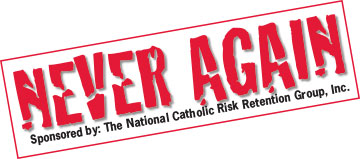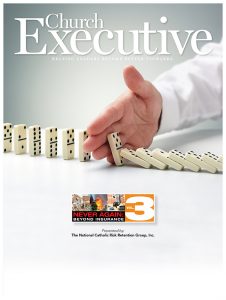
 By Michael J. Bemi
By Michael J. Bemi
Our series on moving “beyond insurance” has identified and examined all the critical elements and related processes to enable an insured entity to “move beyond” insurance.
However, we have not yet discussed and described the options available to your entity to retain risk. These options exist as methods of alternative risk financing and themselves are alternative risk mechanisms.

Risk retention and alternative risk financing tend to “flow” along a relative continuum. That continuum usually begins with an organization individually self-insuring some portion of the losses generated by its insurable exposures/operations/activities. When closely related entities — such as a presbytery, district, diocese, synod, etc. — recognize the commonality of their exposures/operations/activities, they might form a self-insured pool.
As the alternative financing experience and expertise of a related group increases over time, it might be attracted to a more sophisticated method of risk financing. Typically, this would involve moving toward establishment of its own insurance company. Note that for taxable entities, this transition to insurance company status can provide two tax advantages:
1) Acceleration of the deductibility of established loss reserves; and
2) Provision of greater certainty regarding the deductibility of premium payments.
Even this process of establishing an actual insurance company can itself follow a continuum, somewhat akin to children crawling before they walk and walking before they run.
Smaller entities might choose to elect IRC (Internal Revenue Code) 831(b) status, which provides that an insurer may be taxed only on its investment income — and not its underwriting income/profits — if its net written premium (or, if greater, direct written premium) does not exceed $2.2 million and certain ownership and diversity of control requirements are met. Note that electing this option should be done with great prudence and caution, as abuse of this tax provision (via its use for estate planning purposes and gift tax avoidance) has led to significant scrutiny by the IRS to ensure that the entity created does not constitute a “transaction of interest.”
Alternatively, “baby steps” can be taken via establishment of a “cell” captive within a “sponsor” insurance organization. Larger and more experienced groups of entities might form a group “captive.” Simply put, a “captive” insurer is an insurance company subsidiary of a non-insurance entity; for our purposes, the non-insurance entity is a church group. If the needs of the group revolve around liability insurance issues, they might choose to form a Risk Retention Group (a liability only captive enabled under Federal authorizing legislation).
In all these instances — and with all these mechanisms — the professional assistance of actuaries, attorneys, consultants and specialty brokers should be sought, to

maximize the probability of successful risk financing that will “stand the test of time.”
Here are two caveats that can never be ignored or discounted if you choose to “go down this path.”
First, you shouldn’t even initiate this process without being able to identify several well-defined needs that suggest you should retain your own risk. What are some of these needs? They include:
• You can’t obtain insurance in the commercial market to protect a ministry or ministries that you believe are essential to your religious mission.
• The insurance you can obtain is inadequate based upon an analysis of its coverage terms and provisions. In other words, it excludes coverage for activities/operations/ministries that are critical to the practice and profession of your faith.
• The insurance you can obtain is adequate in regard to what it protects, but the available limit of coverage is not adequate when compared to the potential for damaging losses you might experience.
• The insurance you can obtain is generally adequate to your needs, but is egregiously overpriced based upon your excellent long-term loss history.
• Any combination of the above creates a well-defined need.
Finally, keep reminding yourself that successfully operating an insurance company “over the long haul” is, in fact, an extremely difficult task.
Michael J. Bemi (retired) is former president & CEO of The National Catholic Risk Retention Group, Inc. (Lisle, IL) — a recognized leader in risk management. To learn more about available coverage — and to get valuable tools, facts and statistics — visit www.tncrrg.org.


